Pickleball, a sport that’s taken the world by storm, isn’t just a test of skill and agility—it’s also a battle with the elements. Whether you’re a seasoned pro or just picking up a paddle, understanding how weather affects play is crucial. From the sweltering heat of summer to the unpredictable gusts of a windy day, the elements can turn the game on its head.
Weather doesn’t just impact the flight of the ball or the grip on your paddle; it also influences the rules of the game. Adjustments to play and equipment are often necessary to keep the game fair and enjoyable for everyone. Let’s dive into how the weather plays a pivotal role in pickleball, shaping not only the strategies but also the very rules of the game.
The Influence of Heat on Pickleball Play
When the mercury rises, so do the challenges on the pickleball court. Heat affects not just the players but the equipment and gameplay as well. As temperatures soar, players often find themselves battling not only their opponents but also the sweltering conditions that can dramatically alter the dynamics of the game.
Firstly, the effect of heat on pickleball equipment is profound. The balls used in pickleball are particularly susceptible to temperature changes. In high heat, the balls tend to become softer and less bouncy, which can significantly affect their speed and the height of their bounce. Players need to adjust their playing style to compensate for this change, often requiring more force behind their shots to maintain the usual game pace.
| Temperature | Ball Condition | Impact on Gameplay |
|---|---|---|
| High Heat | Softer, Less Bouncy | Slower Ball Speed, Lower Bounce Height |
Moreover, the pickleball paddles, usually made from composite materials or graphite, can become more flexible in high temperatures. This slight flex can alter the power and precision of shots, requiring players to adapt their grip and swing to maintain control over their shots.
The heat affects players’ physical conditions significantly. Hydration becomes a critical factor, with players needing to consume more fluids to avoid dehydration. They also need to take precautions to prevent heat-related illnesses, which can range from mild heat exhaustion to severe heat stroke. Adjusting playtimes to cooler parts of the day, like early mornings or late afternoons, and taking regular breaks during matches can help mitigate these risks.
Additionally, heat influences the strategy and tactics employed by players. Long rallies become more taxing under scorching conditions, so players might opt for a more conservative playstyle, prioritizing placement and control over power to conserve energy. This strategic shift can lead to more tactical gameplay, with players seeking to outmaneuver their opponents rather than overpower them.
It’s also worth mentioning that local and tournament rules may adapt to extreme heat conditions. These adaptations can include allowing longer breaks between games, implementing more frequent hydration breaks, or even modifying the scoring system to shorten matches. Players must stay informed about these rule changes and adjust their preparation and strategy accordingly.
The Effects of Wind on Pickleball Match Dynamics
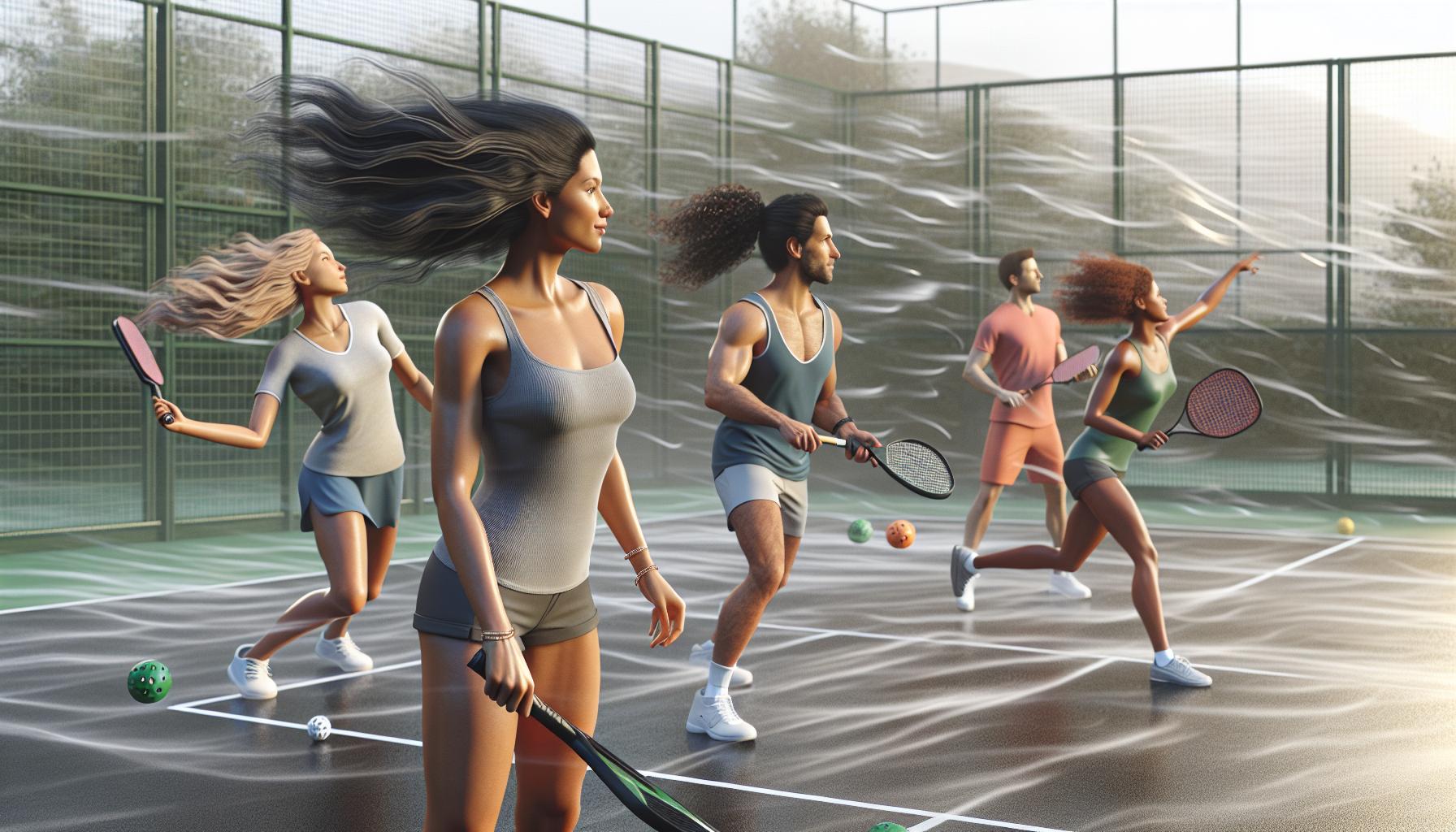
While heat fundamentally changes how pickleball equipment behaves and how players approach their game, wind introduces its own unique set of challenges, fundamentally altering match dynamics. In pickleball, even a slight breeze can turn an ordinary match into a test of adaptability, strategy, and skill.
Wind affects pickleball in several notable ways. Firstly, it changes the trajectory of the ball. This means that shots that would normally land inbounds can drift out, and strong gusts can either accelerate the ball unexpectedly or stop it in its tracks. Consequently, players need to adjust their aim and the power behind their shots to compensate for wind direction and speed.
Secondly, serving in windy conditions becomes a skill of its own. Players must time their serves with lulls in the wind or use the wind to their advantage by adjusting their serving technique. This can lead to a more defensive style of play, as players may aim for safer, more predictable shots rather than attempting riskier, aggressive serves.
Here’s a quick look at how wind speed can impact game play:
| Wind Speed (mph) | Impact on Gameplay |
|---|---|
| 0-5 | Minimal impact, game play remains largely unchanged. |
| 6-10 | Noticeable effects on ball trajectory, players begin adjusting shots. |
| 11-20 | Significant impact, requires strategic adjustments and careful serving. |
| 21+ | Game play heavily impacted, players may struggle to maintain control, leading to more cautious strategies. |
Additionally, communication between team members in doubles becomes crucial in windy conditions. Players have to be more vocal to coordinate shots and strategies, as the wind can catch and carry the ball in unpredictable ways. This requires teams to be more in sync and adaptable to the changing conditions on the fly.
Strategically, players might adjust their positions on the court to better anticipate and react to wind-affected shots. They might play closer to the net to reduce the amount of time the ball is in the air or stay further back to give themselves more time to react to erratic ball movements.
Adapting Equipment to Different Weather Conditions
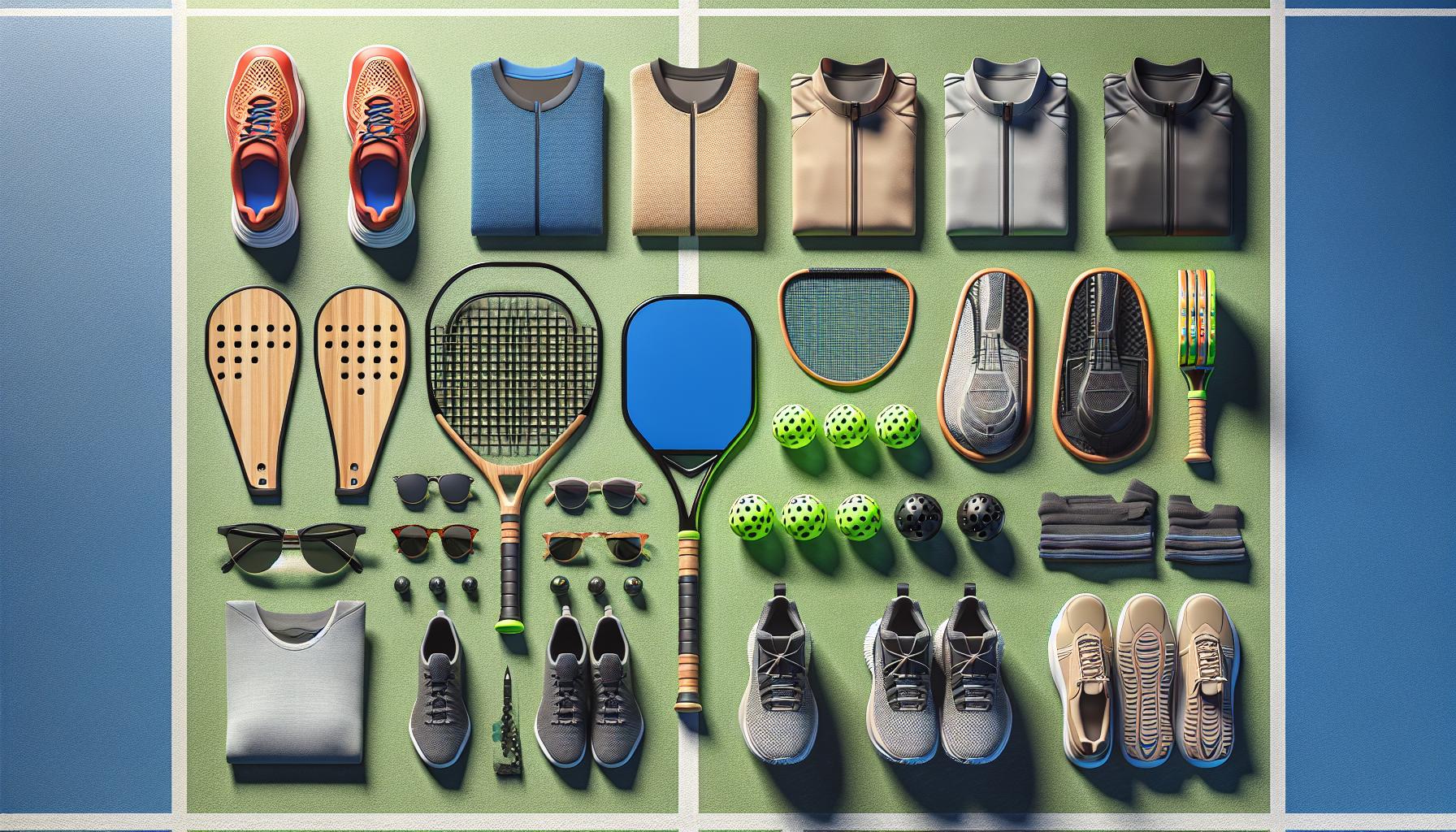
In the world of pickleball, being prepared for variabilities in weather is as crucial as mastering the serve or the smash. Players who adapt their equipment to match changing weather conditions find themselves at a distinct advantage. The selection of the right paddle, balls, and even clothing can significantly influence performance on the court under different weather scenarios.
Paddles, the primary tool in pickleball, come in a variety of materials that behave differently under various conditions. On humid or rainy days, composite or graphite paddles are preferable due to their water-resistant qualities. These materials prevent the paddle from becoming slippery, ensuring a firm grip and consistent play. In contrast, on colder days, players might opt for paddles with a polymer core, which tends to retain its responsiveness better in low temperatures compared to its counterparts.
When it comes to pickleball balls, the choice is equally important. Outdoor balls are designed with harder plastics and smaller holes to withstand windy conditions and offer less wind resistance. However, during cold weather, these balls can become too hard and less lively, affecting the game’s pace. In such cases, players might temporarily switch to using indoor balls, which are softer and can help compensate for the reduced bounce and speed in cold conditions.
Footwear is another critical aspect that players adjust based on weather conditions. On wet surfaces, shoes with enhanced grip and water resistance help prevent slips and falls. Meanwhile, on hot days, breathable shoes are essential to keep the feet cool and reduce the risk of overheating. Players often have multiple pairs of shoes suited for different types of weather to ensure they’re always playing at their best, regardless of the conditions.
Clothing choices are equally strategic. Layers are the key to adapting to variable temperatures throughout the day. Lightweight, moisture-wicking fabrics are paramount for hot and humid conditions, allowing the body to breathe and remain cool. Conversely, in cooler climates, players might wear thermal compression clothing beneath their standard gear to retain body heat without sacrificing mobility.
Lastly, eyewear adapted for different lighting conditions can’t be overlooked. Sunglasses with polarized lenses are beneficial in bright sunlight, reducing glare and helping players track the ball more easily. For overcast or low-light conditions, lenses that enhance contrast and improve visibility can make a significant difference in play quality.
Rule Adjustments in Response to Weather Challenges
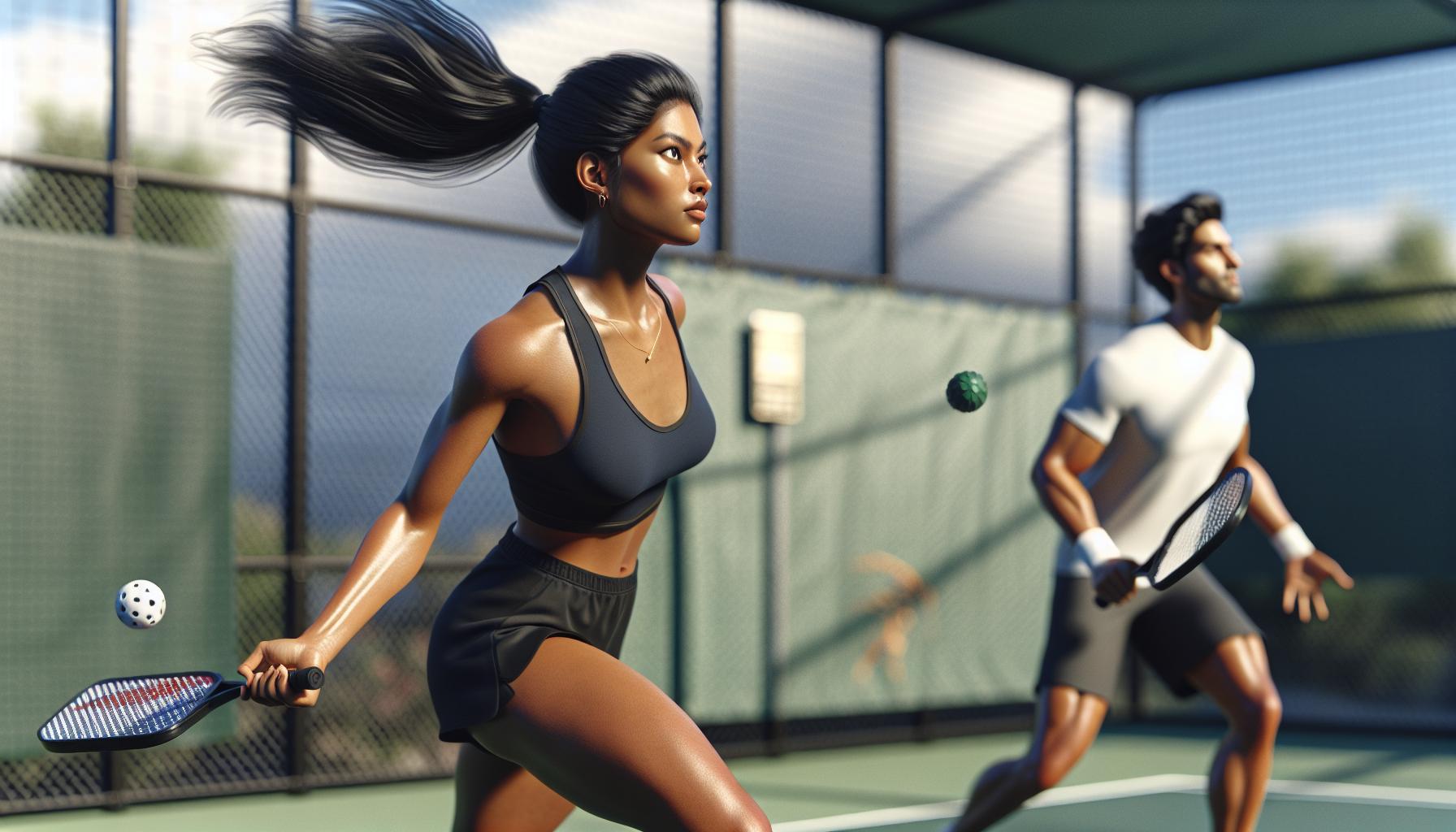
Weather directly impacts how a pickleball game unfolds on the court. Recognizing this, players often adapt not only their equipment but also strategize around rule adjustments tailored to weather changes. These modifications are pivotal for maintaining fairness and the integrity of the game, especially during competitive play.
In instances of strong winds, for example, players may agree to alter the serving rules to allow for a second serve if the first is heavily influenced by a sudden gust. This concession acknowledges the role of luck introduced by weather, striving to keep the focus on skill and strategy. Similarly, the non-volley zone rules might be relaxed slightly in windy conditions to account for the unpredictable movement of the ball.
Rain introduces another layer of complexity, often leading to pauses in play. However, in light drizzles, games can continue with mutual consent. The key rule adjustment here revolves around the ball’s bounce. Players may agree on a certain leniency for balls that skid or halt unexpectedly due to wet surfaces.
Extreme temperatures, hot or cold, bring their own set of challenges and rules adjustments. During hot weather, additional hydration breaks may be inserted between games or even during a game, beyond the traditional timeouts allowed. In cold conditions, the play might include provisions for more dynamic warm-up times to prevent injuries.
Furthermore, visibility issues caused by weather, like sun glare or fog, can result in temporary adjustments to court sides or even playing times. Players might agree to switch sides more frequently to ensure neither has a prolonged disadvantage due to poor visibility.
Safety First
Above all, player safety is paramount. Rules are often adjusted to prevent injury and ensure the wellbeing of participants. Whether it’s allowing extra equipment like gloves for grip in wet conditions or modifying the scoring system to shorten games under extreme temperature stress, the health of players takes precedence.
Referees and players alike monitor conditions closely, prepared to modify rules further or halt games if weather conditions deteriorate beyond safe play thresholds. This collaborative approach ensures that the game remains competitive and enjoyable, regardless of weather’s unpredictable nature.
By embracing these adjustments, pickleball players demonstrate resilience and adaptability, crucial traits for mastering gameplay across a variety of environmental conditions. They’re not just battling their opponent across the net, but also strategizing against the elements, making each win that much more satisfying.
Strategies for Success in Various Weather Conditions
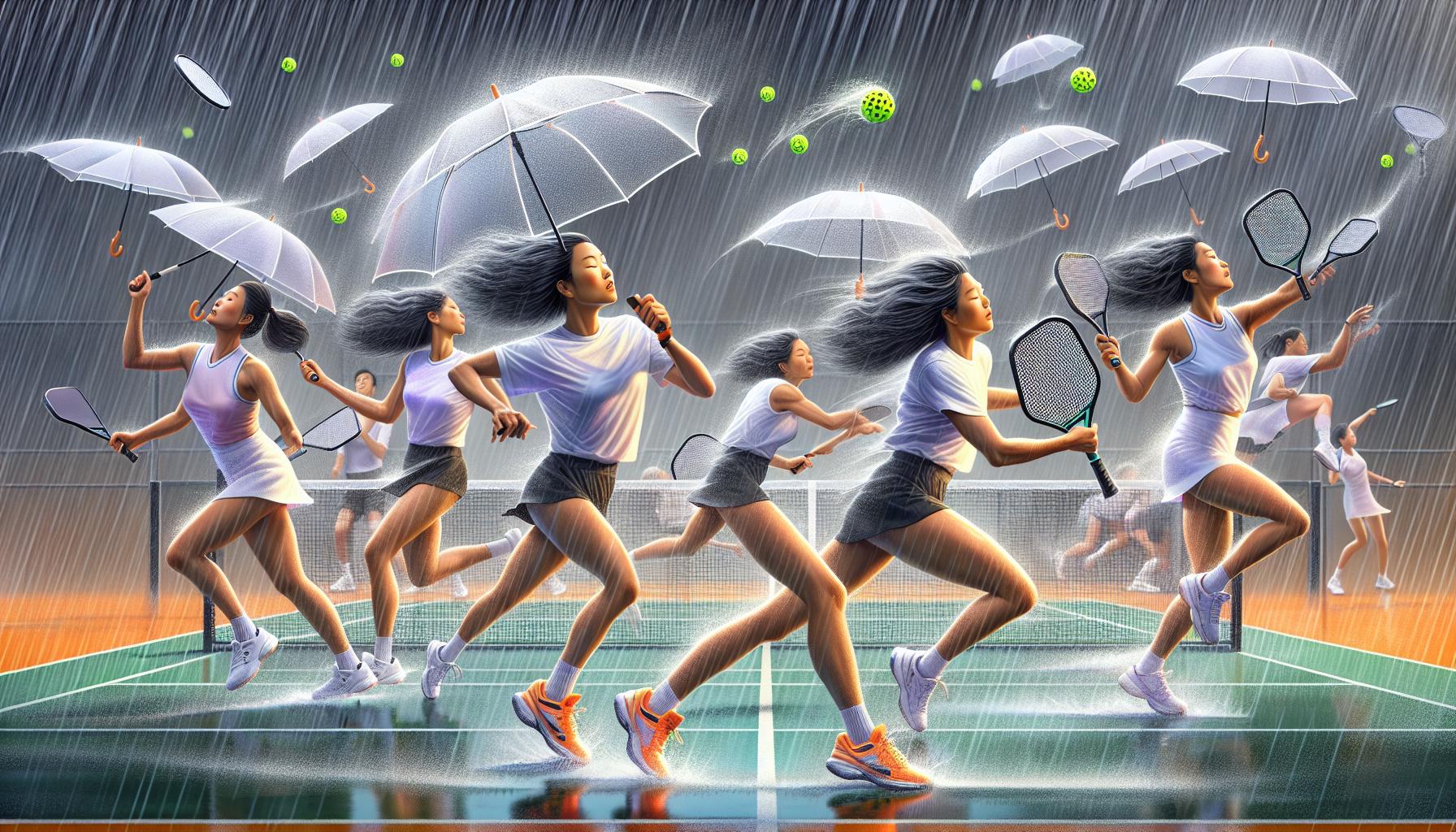
Pickleball players know that the weather can play as big a role in their game as their skill level. Understanding how to adapt strategies for different weather conditions is crucial for maintaining a competitive edge and enjoying the game regardless of what Mother Nature has in store. Here’s how players can tailor their approach to various weather scenarios.
Windy Conditions
Wind can significantly impact pickleball play, altering the trajectory of the ball and making serves and returns unpredictable. In windy conditions, players often opt for shorter, more controlled shots to minimize the wind’s effect. Serving deep can be challenging when facing the wind, so players might serve closer to the net or aim for the middle of their opponent’s court to reduce errors. Additionally, they become more conservative in their play, relying less on power and more on precision.
Rainy or Wet Conditions
Rain introduces slick surfaces and affects how the ball bounces. Players need to be especially mindful of their footing to prevent slips and falls. Quick, short movements become key. They also usually adjust their serving technique to ensure the ball clears the net with less force, anticipating a heavier, slower bounce. It’s common to see longer volleys during wet conditions as players take extra care with their shots, focusing on keeping the ball in play rather than going for aggressive, risky shots.
Extreme Temperatures
Whether it’s the sweltering heat of summer or the biting chill of winter, extreme temperatures demand adjustments in play and preparation.
- Hot Weather: Hydration becomes paramount. Players are encouraged to take regular sips of water, even during short breaks. Wearing light-colored, breathable clothing helps manage body temperature. In terms of gameplay, they might adopt a more conservative style to conserve energy, focusing on strategic placement of shots rather than power.
- Cold Weather: Keeping muscles warm and flexible is essential to prevent injury. Players increase their warm-up time, incorporating dynamic stretches. They might opt for softer, more flexible pickleballs designed for cold weather play, as standard balls can become too hard and less responsive. The strategy shifts towards faster plays to keep the body moving and warm.
Reduced Visibility
When fog, dusk, or other conditions reduce visibility, players adjust by focusing more on the ball’s movement and less on their opponent’s position. Communicating with doubles partners becomes even more crucial to avoid collisions and missed opportunities. Players might slow down their serves and returns to ensure accuracy over speed.
Conclusion
Pickleball players showcase remarkable adaptability by adjusting their strategies to accommodate various weather conditions. From tweaking shots in the wind to enhancing footwork in the rain and adapting to extreme temperatures, they ensure the game remains competitive and fair. This adaptability doesn’t just demonstrate their dedication to the sport but also enriches their playing experience. It’s clear that weather plays a significant role in pickleball, but with the right adjustments, players continue to enjoy and excel in the game regardless of the conditions.

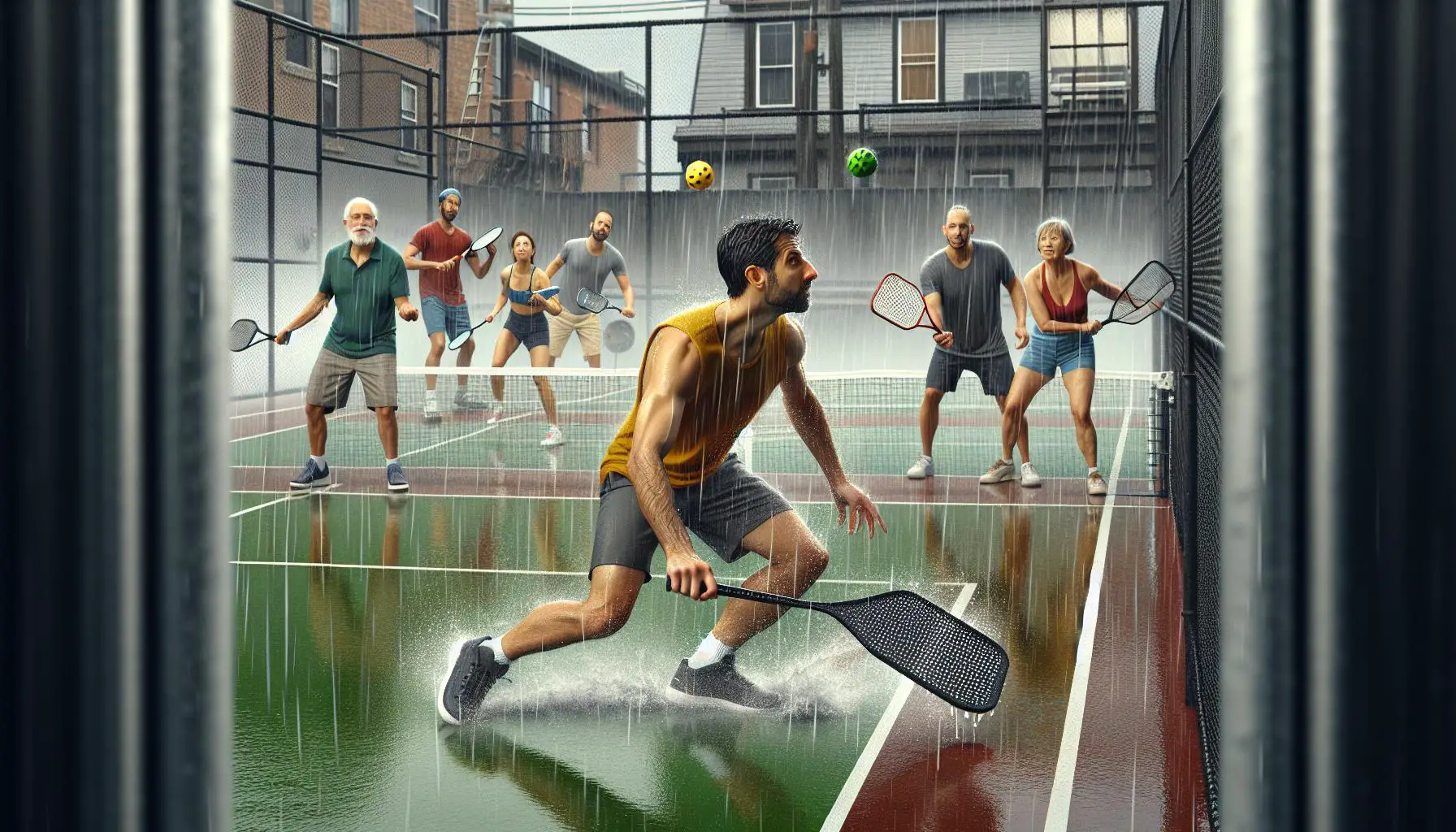









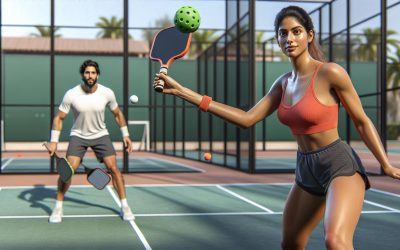
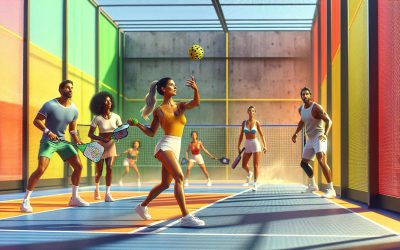

0 Comments